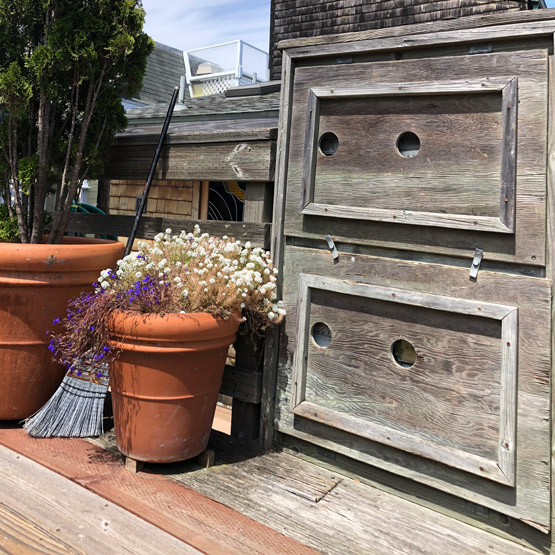We are well into a fire-season that used to start first of August (and now runs year-round). And the press is full of stories of fires so intense they effectively create their own weather (resembling tornadoes and hurricanes, but hot and dry rather than wet). Scary game-changing stuff.
Living as we do—floating on the water—we are not immune to fire, but rather we have our own unique set of risks. Because most of our homes have barely 10 feet between them, a fire on one home could quickly jump to a neighbor’s. Embers can travel as far as 5 miles, which means we wouldn’t even need a fire to sweep down the bowl of the surrounding hills for us to be in trouble.
Please check (and clear) the area surrounding the standpipes, fire hoses and gas meters (photos above) on your dock. These may look different, but the concept is the same. Consider that the few seconds required to move a pot or ornament are a few more seconds for a fire to take hold, and that cumulatively a half minute or more could prove disastrous.
Know also that the firefighters require a sufficiently wide passageway down the middle of each pier—all the more important at low tide when a fireboat might not have access. Following the same reasoning, bicycles should not be left on the public portion of the piers and docks. If you are new to the docks, be forewarned that periodic sweeps to remove the bikes have occurred.
We would be well-advised to adopt our own version of defensible space around our homes (typically described as a 100-foot perimeter cleared of the brush and high grass that can contribute to the spread of wildfires). Our list would include: check that our gutters are clear, remove build materials no longer needed, dispose of anything else around our homes that could add fuel to a fire, and—not least—maintain clear access to our gas shutoffs and fire safety equipment.
Underlying the above, and when all else fails, each home should have a fire evacuation plan.
photos by Jenny Stein | post by Jenny and Flo Hoylman, Emergency Preparedness committee


